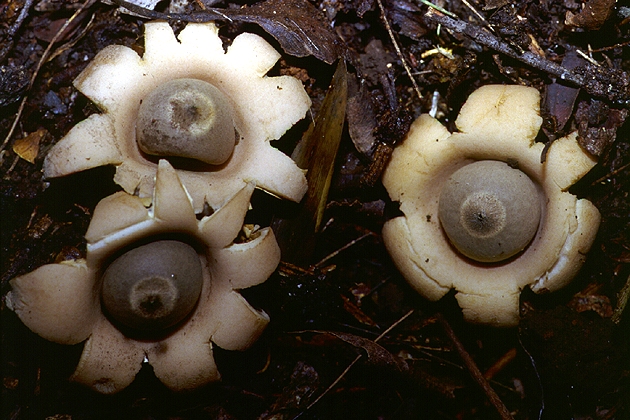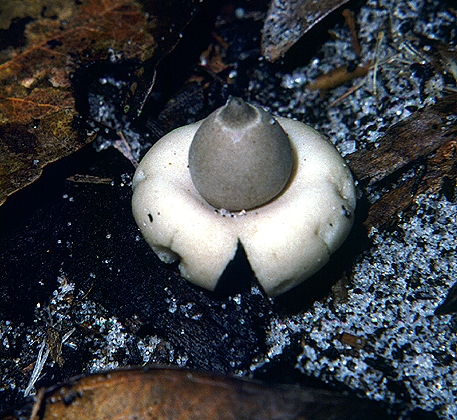
Geastrum australe (Berk.) G.Cunn.

Common name: Earthstar.
Description: At first the unopened earthstar resembles a rather firm, brown ball about 24 cm in diameter. The outer layer then splits radially and forms the star-like base with a diameter of up to 7 cm. The central puffball is spherical, smooth, silky and a shade of brown; at maturity, the surface of the ball is thin and papery. There is no stem between the puffball and base. The opening (stoma) through which the spores are 'puffed' by raindrops is very clearly marked, usually with a small raised circle. The star rays often become reflexed and push the central puffball up off the substrate. The mature spore mass is brown and powdery.
The globose spores measure 6.59 µm in diameter and are spiny and brown; the spines are short and flat at the summit.
Substratum: Earthstars are found on soil, usually among litter and generally in eucalypt forests or at least forests with a eucalypt component. A favourite location is mixed eucalypt-Casuarina forest where the fruiting bodies are frequent among the Casuarina needles. The fungus may be solitary but is more commonly found in small groups. Occasionally, this earthstar may appear in large troops.
Distribution: Known from Queensland to Victoria and South Australia. Tasmanian records are presently uncertain.

Notes: This species is very close to another earthstar, Geastrum triplex, which is found on rich humus in rainforests. Geastrum triplex is often much larger (up to 10 cm in diameter) and is characterised by a third layer which only partially splits away from the central puffball and star rays and then forms a cup around the base of the central puffball. All earthstars share a common method of releasing their spores. At maturity, the central puffball is raised up above the litter by the rays of the star while the spore mass has become brown and powdery. During rain, drops fall on the thin papery skin of the puffball which then acts like a set of bellows and puffs clouds of spores out of the top opening. A colony of these mature earthstars examined during rain is spectacular for the brown clouds of spores constantly appearing above the fruiting bodies.

